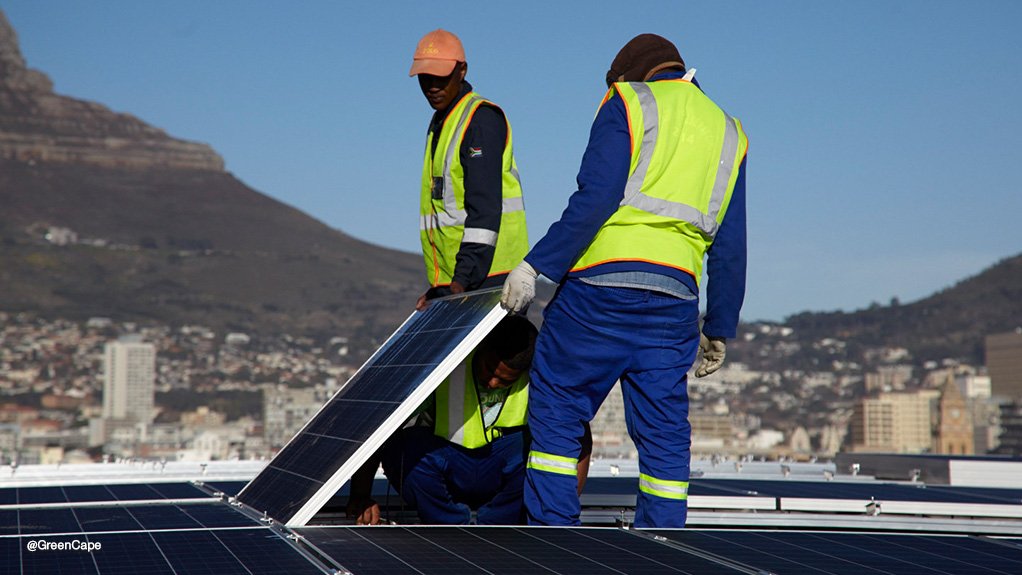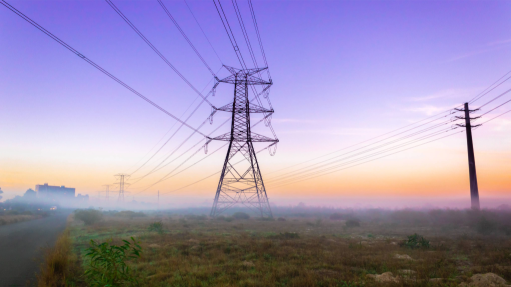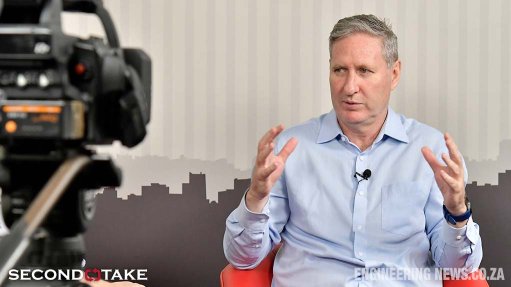There are already more clean-energy than fossil-fuel jobs and gap is set to widen


Rooftop and small-scale installations account for about two-thirds of the four-million jobs in the PV sector
More people work in the energy sector today than in 2019, almost exclusively because of the growth in clean-energy sectors, which have employed more workers than fossil fuels since 2021, a new International Energy Agency (IEA) study shows.
The ‘World Energy Employment 2023’ report states that energy sector employment rose by 3.4-million to reach 67-million in 2022, underpinned by 4.7-million more clean-energy jobs, increasing the total number of workers employed across clean-energy industries to 35-million.
Growth in employment was driven primarily by the five sectors of solar photovoltaic (PV), wind, electric vehicles and battery manufacturing, heat pumps and critical minerals mining.
Solar PV employment rose to four-million jobs, mainly associated with installing new capacity, with rooftop and small-scale installations accounting for about two-thirds of the jobs in the sector.
Electric vehicles and batteries, meanwhile, emerged as the fastest-growing employment creator, adding well over one-million jobs since 2019.
The report also shows that 800 000 workers are currently mining critical minerals for clean energy technologies and that the number of jobs in the sector could double by 2030 under a scenario where net-zero targets are met.
“Mining jobs for these critical minerals are concentrated in a handful of countries where larger mines operate, notably Indonesia and major producers in Africa and South America,” states the report, which is the second to be published by the IEA and the first to include figures on critical-minerals mining jobs.
By contrast, fossil fuel-related employment remains 1.3-million below pre-pandemic levels at 32-million, with as many as 13-million fossil-fuel jobs at risk in the period to 2030 under a scenario aligned with energy transitions aligned with the goal of limiting global warming to 1.5 °C.
The report warns that the transition risk is particularly acute for coal miners in emerging and developing countries, with the coal supply workforce having already contracted by 225 000 jobs between 2019 and 2022, mostly as a result of mechanisation.
Under the same 1.5 °C scenario, 30-million new clean energy jobs could be created by 2030, underlining the relative job-intensity of clean-energy sectors relative to fossil fuels.
“This means that around two clean energy jobs would be created for every fossil fuel-related job lost,” the IEA states.
However, it also cautions that energy jobs may not always be in the same location nor require the same skills, and urges policymakers to focus on job training and capacity building to ensure that energy transitions benefit as many people as possible.
The report also warns that a growing number of energy industries are citing skilled labour shortages as a key barrier to ramping up activity.
A survey carried out by the IEA with 160 energy firms globally also found the number of workers pursuing degrees or certifications relevant to energy sector jobs was not keeping pace with growing demand.
This was particularly the case for vocational workers such as electricians specialised for energy-sector work, as well as professionals in science, technology and engineering.
This diverging jobs trend between clean energy and fossil fuel employment was repeated across all regions, including Africa, where the solar PV trend was also evident
“Off-grid solar home systems sales are playing an increasingly prominent role in regions without universal electricity access today, mainly in sub-Saharan Africa where around 8% of households with access to electricity rely on these systems.
“Rapid growth in this sector has boosted the number of solar PV jobs in Africa to an estimated 115 000 in 2022.”
Comments
Announcements
What's On
Subscribe to improve your user experience...
Option 1 (equivalent of R125 a month):
Receive a weekly copy of Creamer Media's Engineering News & Mining Weekly magazine
(print copy for those in South Africa and e-magazine for those outside of South Africa)
Receive daily email newsletters
Access to full search results
Access archive of magazine back copies
Access to Projects in Progress
Access to ONE Research Report of your choice in PDF format
Option 2 (equivalent of R375 a month):
All benefits from Option 1
PLUS
Access to Creamer Media's Research Channel Africa for ALL Research Reports, in PDF format, on various industrial and mining sectors
including Electricity; Water; Energy Transition; Hydrogen; Roads, Rail and Ports; Coal; Gold; Platinum; Battery Metals; etc.
Already a subscriber?
Forgotten your password?
Receive weekly copy of Creamer Media's Engineering News & Mining Weekly magazine (print copy for those in South Africa and e-magazine for those outside of South Africa)
➕
Recieve daily email newsletters
➕
Access to full search results
➕
Access archive of magazine back copies
➕
Access to Projects in Progress
➕
Access to ONE Research Report of your choice in PDF format
RESEARCH CHANNEL AFRICA
R4500 (equivalent of R375 a month)
SUBSCRIBEAll benefits from Option 1
➕
Access to Creamer Media's Research Channel Africa for ALL Research Reports on various industrial and mining sectors, in PDF format, including on:
Electricity
➕
Water
➕
Energy Transition
➕
Hydrogen
➕
Roads, Rail and Ports
➕
Coal
➕
Gold
➕
Platinum
➕
Battery Metals
➕
etc.
Receive all benefits from Option 1 or Option 2 delivered to numerous people at your company
➕
Multiple User names and Passwords for simultaneous log-ins
➕
Intranet integration access to all in your organisation

















